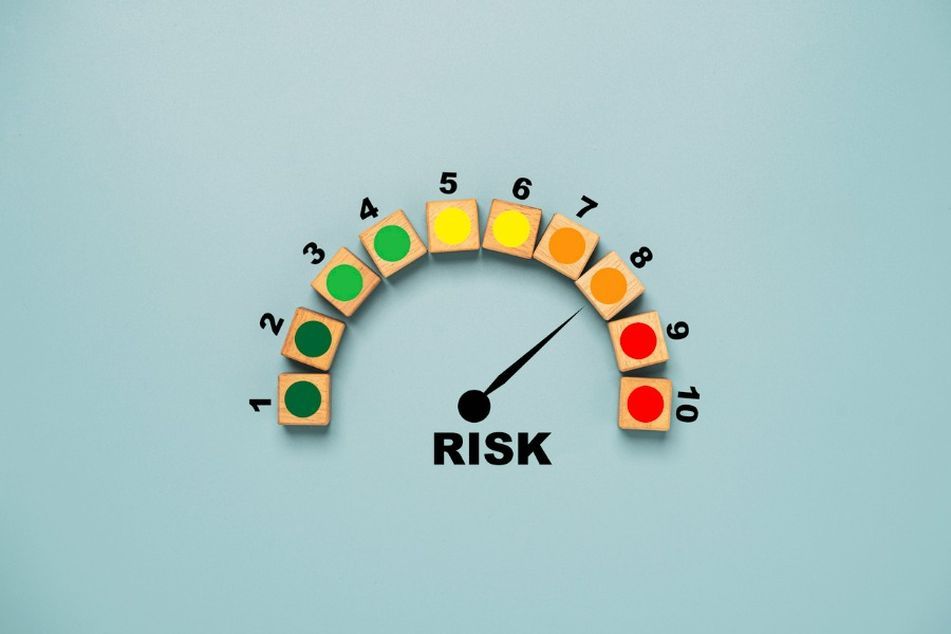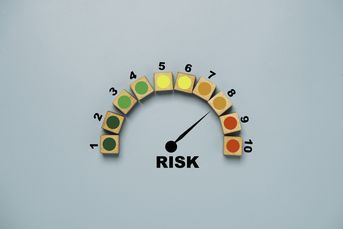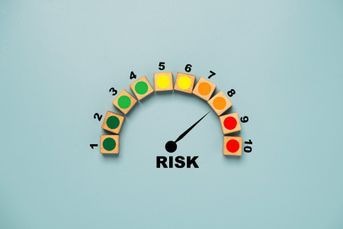Risk analytics software: should your RIA firm have one?

Since the advent of Big Data, more RIA firms are turning to risk analytics software. Should this be part of your RIA tech stack? Read on to find out.
Some RIA firms that assemble their RIA tech stack may also choose to add something relatively new – risk analytics software – as part of their practice. As it helps assess and manage industry-specific risk, this software has recently become very useful also to financial firms and professionals.
Risk analytics software and the finance industry’s need for it came up during the rise of Big Data. This brought about enhanced computing and advanced analytics capabilities, so financial firms realized how well they could use large amounts of data to assess and manage risks.
Those without much experience with this fintech may ask, what is risk analytics software and how does it work? What are the best risk analytics software options for RIAs? InvestmentNews provides insight into these and other relevant questions about risk analytics software, so read on.
What is risk analytics software?
the best
Risk analytics software is a specialized tool used in risk management. Some of these risk management tools may use artificial intelligence (AI) with advanced algorithms and statistical models to analyze and identify potential risks.
In financial institutions like RIAs, the software helps assess and mitigate risks of investments, then provide actionable insights. That way, RIAs can help their clients make informed decisions and optimize risk management strategies for their investments and investment portfolios.
According to Helen Yang, CEO and Founder of Andes Wealth Technologies, “there is a lot to risk [other] than risk tolerance. We have developed a 4D risk framework that encompasses risk tolerance, capacity, perception and composure.” Helen adds, “talking about risk, behavioral finance is a huge part of it, because managing risk is, to a large extent, managing investors’ behavioral risk.”
How does risk analytics software work?
When applied by RIAs, risk analytics software is used to analyze market data, customer behavior patterns, and economic indicators. The software then assesses and manages the associated risks of their clients’ loans, investments, and credit portfolios. By doing this, potential financial risks are identified, so advisors can optimize their clients’ investment strategies.
While the User Interface of risk analytics tools vary, their essential functions work in much the same way. Here’s how this tech tool works for RIAs:
- the software helps create a baseline for measuring what the company considers a risk
- several possible risk scenarios are uploaded onto the platform, or the software uses algorithms and data models to come up with possible risk scenarios
- RIAs can then view, assess, identify, understand and manage the risks
- the software assists RIAs to form data-driven, actionable insights
- RIAs can perform optimal investment strategies that mitigate or avoid predetermined risks
Helen Yang gives us a picture of how simple the risk assessment and risk control process can be: “we use an interactive tool to choose the upside and downside tradeoffs, which is cross validated by a curated psychological questionnaire.
“When showing the upside/downside tradeoffs, the most intuitive and direct approach is to show a set of advisor’s models covering the risk range and ask the client to pick one.” And how simple can the process appear to the client? “This is like going to a restaurant, picking what you like from the menu, and getting just that.”
Why is risk analytics software important for RIAs?
RIAs deal in investments and every investment has a degree of risk, without exception. Risk is not something some RIA clients can take lightly, since some of their clients may be investing to build a retirement nest egg. It also does not help clients who are anxious about their retirement to find out that their money may not be enough for a decent retirement.
With risk analytics software as part of your RIA tech stack, you have the best tools to help you pinpoint investments’ associated risks and take steps to manage those risks. You can also set your RIA firm apart from the others by placing your clients in the best position to reach their financial goals.
Other benefits of having risk analytics software include:
- maintaining competitiveness in an increasingly data-driven industry
- simplifying and speeding up portfolio risk analysis and clients’ risk tolerance analysis
- mitigating clients’ risk of loss in investments
- optimizing investment portfolios
The best risk analytics software
Here’s a list of some of the best risk analytics tools available in the market. They may not be tailored to RIAs, but these tools are versatile and highly customizable to suit your RIA’s needs.
1. Nitrogen
Formerly known as Riskalyze, Nitrogen is fast becoming the growth platform of choice for many wealth management firms. Nitrogen has been touted as the platform that helps advisors turn leads into meetings, meetings into valued clients, and clients into effective referrals.
Nitrogen’s parent company invented Risk Number®, a tool that can quantify a client’s risk tolerance. Nitrogen holds the distinction of being built on top of a Nobel Prize-winning academic framework.
2. Andes
Andes by Andes Wealth Technologies offers RIA-crucial risk assessment features like personalized risk tolerance, behavioral finance, and Investment Policy Statement (IPS) solutions. Andes is one of the novel solutions for advisors to deliver wealth management.
Andes Wealth Technologies pioneered the concept of combining behavioral finance with risk visualization, resulting in a new way to deliver wealth management services. The software was inspired by Dr. Andrew Lo from MIT and his Adaptive Markets Theory. Andes gives clients a comprehensive onboarding and communication technology solution to help financial advisors provide highly personalized services that set them apart from competitors.
3. Tolerisk
Tolerisk touts itself as the “ultimate risk tolerance solution” for fiduciaries. More than delivering traditional one-dimensional risk assessments, Tolerisk provides advisors with a holistic perspective.
They do this by combining the client’s willingness and ability to take risk.
With Tolerisk, RIA clients can be better equipped with the right data to make informed decisions and get tailor-fit investment strategies for their unique risk profile.
4. Orion Risk Intelligence
This risk assessment platform allows advisors and wealth management firms to identify and mitigate potential risks in their clients’ portfolios. Orion Risk Intelligence harnesses advanced analytics and machine learning algorithms to provide real-time insights into market trends, portfolio volatility, and potential threats to investment performance.
The platform enables advisors to proactively manage risk, optimize asset allocation, and make informed investment decisions that can protect and grow their clients’ wealth.
Why is data important in risk analysis?
Data and data analytics allow companies to monitor risk. This is achieved by continuously analyzing data streams and pinpointing any key risk indicators. Having the relevant data lets organizations detect emerging risks, initiate timely alerts, and take proactive measures to mitigate any potential damage or loss.
Data analytics also supports risk reporting, providing advisors with accurate and timely information about identified risks and mitigation actions.
Other important reasons to have the right data for risk analysis include:
1. Data takes out the guesswork
Using timely and relevant data makes managing risks and risk-related issues less of a guessing game and more of a logical, organized process. When RIAs use data to identify risks, it’s easier to mine actionable insights. From there, they can take the recommended measures based on these insights and have a greater chance of arriving at the best outcomes.
2. Data helps with making informed, logical decisions
In the past, much of the financial planning was based on emotion. As Craig Clark, CMO of Nitrogen, says: “The essence of professional financial planning has always been behavioral finance – long before the term was popularized… the job was to establish a deeply trusted relationship that enables an advisor to change investor behavior, preventing them from sabotaging their own plan with erratic, emotional decisions.” Now, with risk analytics software, advisors and their clients rely much less on gut feel and base their financial decisions on hard data.
This is a video back when Nitrogen was still called Riskalyze. In the video, we can see how the Nitrogen platform works. This shows how big data can be used by RIAs to pinpoint their clients’ risk appetite to design and implement the most suitable investment strategy:
3. Data allows for more transparency and efficiency
Apart from eliminating guesswork and emotions from the financial planning equation, the bonus of using data is greater transparency. With data gathered via risk management tools, RIAs have a concrete basis for their recommendations to clients. Securing their approval for such measures is also easier and more efficient.
Clark adds, “it’s getting the client to do the work, to see the market fluctuation scenarios with their own eyes, and to say, ‘yes’ to a proposal that matches their deeply personal financial plans and retirement goals.”
How risk analytics software can help you and your clients
Choosing the right risk analytics software can help your RIA practice a great deal. Apart from investing in CRM tools to deliver top-notch financial services, RIAs should make risk management tools as part of their RIA tech stack. This is especially important if you are a solo RIA or RIA firm that’s just starting out; be sure to account for this indispensable tool as part of your RIA startup costs.
Thanks to this advanced fintech tool, your RIA firm can best serve your clients by helping them mitigate risks. All part of helping your clients meet their financial goals.
Read and bookmark our section on RIAs for news and insights from industry experts to help build your RIA practice.
Learn more about reprints and licensing for this article.








